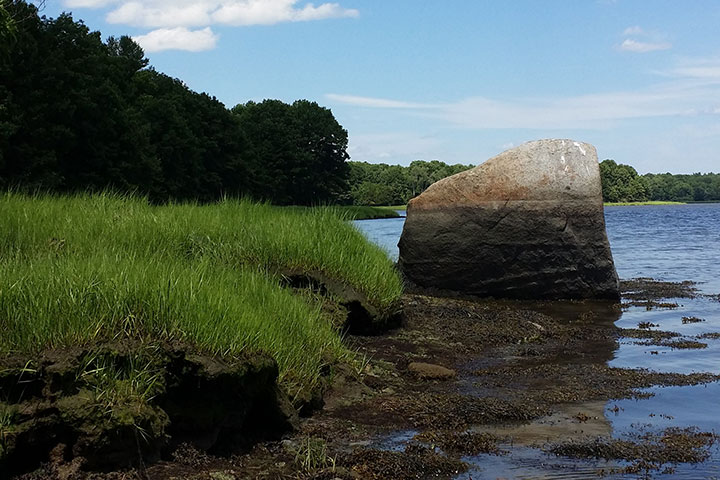Exploring the Trends, the Science, and the Options of Buffer Management in the Great Bay Watershed
Exploring the Trends, the Science, and the Options of Buffer Management in the Great Bay Watershed
Exploring the Trends, the Science, and the Options of Buffer Management in the Great Bay Watershed
Program: NERRS Science Collaborative
Program details » | All NERRS Science Collaborative projects »

Why this work
The health of the Great Bay Estuary is strongly influenced by stressors from across the watershed. Seven rivers flow into the estuary, which is recessed 15 miles from the Atlantic Ocean. While science and case studies clearly demonstrate the value of vegetated buffers along these rivers in promoting a healthy estuary, New Hampshire does not yet consistently or effectively use buffers to protect the Great Bay Estuary.
About this project
This project enhanced stakeholder capacity to make informed decisions on the protection and restoration of buffers around the Great Bay Estuary by addressing the following question: What are the options for addressing the challenges to effectively protect and restore buffer zones around New Hampshire’s Great Bay? The project filled critical information gaps and the results are now supporting strategic agency and nonprofit investments; informing strategies for outreach professionals to work with towns on water quality improvement, habitat protection, climate adaptation, and nonpoint source pollution control; and leading to new research questions.
Final products
Project website: Buffer Options for the Bay
Final Integrated Assessment Report (PDF)
Buffer width infographic (PDF)
Comparison of regulatory options for buffers (PDF)
Project fact sheet (PDF)
Project leads and contact
Cory Riley, Great Bay National Estuarine Research Reserve, Email: [email protected]
David Patrick, New Hampshire Chapter of The Nature Conservancy Email: [email protected]